I have been a loyal user of Presonus products ever since they first came out with the Firebox. It debuted just as I suddenly had a need for a high quality, very portable ASIO compatible interface for a live setup. I found out they were based here in Louisiana and thought I’d give their product a shot. Well, more than 5 years later and that Firebox is still going strong after years of constant live shows, rehearsals and the occasional remote recording gig. During that time I was working at a small recording studio where, in addition to the hard disk and tape systems, I had a MOTU based DAW. I knew that when it was time to upgrade my home studio, it was time to try something other than MOTU for my I/O… that was right about the time that Presonus announced the FireStudio. Perfect. The FireStudio has performed so flawlessly that I actually forget that it is there. The MOTU 828mkII at our commercial studio was always throwing me curve balls at the worst possible times; not always session-enders, but just little distractions that would force me to stop focusing on the music and focus instead on the equipment. I visited the studio tonight to do some editing for them and about 10 minutes into the session, the old MOTU finally gave up the ghost. This got me thinking about how much I love my Presonus products and I decided to write about my experience with them, specifically the FireStudio.
The Basics
The Presonus FireStudio is a high quality Firewire audio interface. Instead of repeating the basic description and specifications right off Presonus’ website, I’ll just give you the link: Presonus FireStudio
The amount and configuration of the I/O on this device is perfect for my home studio. The 8 analog inputs and outputs are just right for things like overdubs (which is most of what I do at home), small string ensembles, or even recording full bands if I don’t go crazy with drum mics. If I need to I can feed the output of a digital mic preamp into the S/PDIF input, or even use our Yamaha 02r to feed 16 more channels of digital audio to my DAW. The FireStudio can also be daisy chained with other Firewire products in the Presonus line to further extend the I/O. There are some other nifty innovations such as a set of inserts that can be used to place processors such as EQs and compressors in the analog signal path of the two mic/instrument inputs. Presonus also includes an RJ-45 jack to connect an optional remote, which will also be covered in this review.
Of course the FireStudio also contains the other usual connections such as MIDI in/out, BNC connectors for external sync, and a set of unbalanced RCA inputs.
The Firestudio, like the FireBox, is housed in a sturdy and aesthetically-pleasing 1u chassis. After owning this box for a few years, all jacks are still smooth and tight-fitting. No “play” has developed. The FireStudio gets its power from an external power supply that is connected using a threaded, locking DC jack. This is one place where a lot of manufacturers skimp, but Presonus got it right by moving the transformer away from the converters/preamps and making the connector “oops” proof.
All knobs are sturdy and detented. I love this. I have a set of inputs that are usually dedicated as the returns from an old spring reverb that I use as a real-time plugin while mixing. Sometimes, though I need all 8 analog inputs for tracking and have to temporarily evict the reverb and fiddle with the gain settings. The detents on the input knobs allow me to dial-in the exact settings that I had before the device was disconnected. When I go back to mixing, I can be confident that my reverb returns are right where they were.
Analog I/O
The 8 analog inputs on the FireStudio all feature Presonus’ XMAX class-A microphone preamps. These are the best “built-in” mic pres that I’ve ever heard on a box like this. I put them on the same level as the preamps on our Yamaha 02r, which I think are very respectable. The most recent album project that I worked on was mostly tracked at a studio that had racks of boutique and vintage preamps, which all sounded amazing, but a lot of overdubs ended up happening at my apartment on the Presonus due to money and time constraints. The performance of the XMAX mic preamps were awesome. I’m not going to put them up against $6,000 classic pres, but they delivered pure and clean amplification that allowed us to finish the record at home without compromising on quality. My only gripe with the mic pres is that each one doesn’t have it’s own phantom power switch. The preamps are split 1-4 and 5-8 for two phantom power selections, which is definitely better than a global switch, but I still sometimes run into trouble when I’m trying to record certain combinations of sources. Also, each analog input has only a clipping indicator LED. Some meters would be nice as well, but there really isn’t much room for them anyway. Plus the included software provides very accurate and flexible metering.
Channels 1 and 2 also have a high-Z instrument input and an insert loop. These inputs provide plenty enough gain to use as a DI for bass or guitar. Throw a compressor/EQ across the inserts and you’ve got a nice little DI signal path. I am primarily a bass player these days so I tend to just plug in and jam a lot. Admittedly, I rarely if ever record with my bass plugged straight into the FireStudio as I have much better options at my disposal for that. The high-Z inputs are great for laying down scratch tracks, jamming with headphones, or just when you’re too lazy go warm up that tube amp.
The unbalanced RCA inputs are great for connecting a CD player, cassette deck, turntable, etc. Sadly they are just an auxiliary input and play only through the main output. It would be nice if their output could be sent to the DAW. Oh well, right now they are just a convenient way for me to listen to records in the studio without using up valuable analog inputs.
Digital I/O
There is not really that much to report here. The S/PDIF and ADAT inputs and outputs work just as they should. I have had no problems syncing both from/to Alesis ADATs and an HD24, Yamaha 02r via ADAT and S/PDIF, a lexicon digital reverb via S/PDIF, and a few DAT machines via S/PDIF. I have not had a single problem. Same goes for the MIDI I/O – works as it should, nothing to report.
Headphone Amp(s)
I was blown away the first time I plugged my Grado SR80s into my first Presonus product, the diminutive Firebox. At the time it was the clearest, most detailed headphone amp I had ever heard. The FireStudio’s headphone amp is cut from the same cloth providing TONS of headroom and and incredibly punchy and clear sound. The optional remote (discussed below) provides two more headphone outputs that, while they produce very respectable output, cannot be compared to the headphone jack on the front panel. These additional headphone outputs do provide plenty of power and are perfect for setting up separate headphone mixes for the talent while tracking, they just don’t have the stunning clarity on the upper and lower frequency ranges that the built-in headphone amp does.
Software/Drivers
When I first got the Presonus FireStudio, I will admit that I found the software a bit lacking. At the time I was used to MOTU’s CueMix console and I liked its flexibility. While the FireStudio’s software got the job done, there was a lot of functionality left on the table. A year or so into owning the FireStudio, I discovered that Presonus had released a new driver, firmware and software called “Universal Control” as a free download. This new package really woke the FireStudio up!
Universal Control is a great piece of software. It is a mixer/router that, while simple to operate, is very deep and surprisingly flexible. Universal Control is broken up into three sections: Mixer, Outputs/Router, and Hardware Settings.
Mixer
The first page features a 36 channel mixer that is broken up into the 18 hardware inputs of the FireStudio (Analog1-8, ADAT1-8,S/PDIF L-R), and 18 channels of “Playback From Computer” labeled “DAW 1-18”. Each channel features the standard controls: Level, Pan, Mute, Solo, and Link (for stereo pairs). The metering is very accurate and features a peak hold on every channel. There is also a master section that provides flexible output control much in the same way a high-end studio mixer would. You can choose which analog outputs to send your mix to, as well as which headphone outputs will get this mix. I say “this” mix because you can store, name and recall several mixes and even have them loaded up at the same time. For example you can easily have separate control room and headphone mixes, and monitor each one from either place. You can set up one mix to send to the mains, then a separate mix to send to any other outputs such as a separate set of monitors, your home stereo, a tape machine – anything you can imagine – up to 9 different mixes assigned to different outputs. Add the optional remote (with two more headphone outputs and a built-in talkback) and the system gets even more flexible. More on the Monitor Station Remote (MSR) later.
Outputs/Router
The Outputs/Router page features a tabbed 18×18 output matrix that lets you assign anything to anything period. Any of the analog inputs, digital inputs, DAW channels, or any mixes from the first page can be routed to any of the analog or digital ouputs on the FireStudio. Just like the mixer page, presets can be saved and recalled. There is also a “Main Assign” panel that lets you set which analog outputs are assigned to the main output knob as well as the Phones knob(s). Once again, this is another panel that’s features are best realized with the addition of the optional remote.
Hardware Settings
Not much to say here. There are a few important options such as a toggle to show ADAT channels 9-16, and some settings for the optional MSR remote. This page also shows important driver and firmware version information.
Monitor Station Remote (MSR)
The Monitor Station Remote, or MSR, is a small optional remote control for the FireStudio system. It is attached to the FireStudio with an included Category5 cable. I’ll start with that: brilliant! This lets you put your FireStudio over in a rack across the control room and your remote is tethered only by Cat5. The remote doesn’t even need mains power – it gets everything it needs from the Cat5 cable. Considering the functionality of this device, this is impressive.
First and foremost the MSR gives you a big blue volume knob that is very smooth without being too heavy. The volume knob is surrounded by the same types of buttons you would find in the monitor section of any studio mixer: Mute, Mono, Dim, and Talk. Yep, Talk. The MSR has a built in talkback mic with its own “Talkback Level” knob and “Talk” button. There is also an “Extrnl Mic” switch that allows you connect your own talkback mic to the XLR jack on the MSR itself. The “Talk” button is a smart button that latches to on or off if it is tapped quickly, while it becomes a momentary switch if held down. Very functional and intuitive.
Other notable features of the MSR are the “Monitor Source” section that allows you to choose between listening to the Main output, S/PDIF input, or the Aux input. This is great for quickly switching between sources. Along the same lines, there is a “Stereo Control” section that allows you to connect up to 3 pairs of monitors to the analog outputs of your FireStudio and select monitors A, B or C on the fly. Speakers “C” can be combined with speakers “A” or “B” so that the possible cominations are: A, B, A+C, B+C. These speaker selections can only be made in “Mix” mode, which brings us to our next feature: the “Monitor Mode” section. This allows you to switch between “Track”, “Mix”, and “Surrnd” monitor modes. Basically, “Track Mode” leaves all of your I/O available for routing in the Outputs/Router page of Universal Control. “Mix Mode” makes analog outputs 5-8 unavailable for routing as they are used to connect monitor sets B and C. “Surrnd (Surround) Mode” makes analog outputs 1-6 unavailable for routing as they are treated as 5.1 outputs in this mode. Speaking of surround, the MSR also includes a Surround Control panel that allows you to solo/mute each of the 6 surround outputs while in Surround Mode.
Last but not least, the MSR features two additional Headphone outputs with individual level controls. I was a little leery of these headphone outs at first, just because “How good can two stereo signals sound after traveling through 50′ of unshielded twisted-pair network cable?” Well, I don’t know what Presonus is doing to get that audio there, but they sound great and have plenty of gain/headroom. As mentioned above they are not in the same league as the front-panel headphone jack, but not many headphone amps are! These extra headphone outputs sound better than the main headphone outputs on other devices in this class, so I’m not complaining. The combination of these extra outputs with the flexibility of the Universal Control software creates a very powerful and functional tracking environment for my studio. I can personalize a few headphone mixes without a bunch of expensive external systems, while monitoring the take on a audiophile-quality headphone amp in the event that the performance is happening in the “control room” (which it often does at home).
Although the MSR is an optional accessory to the FireStudio, to me it is a must-have. It unlocks so much of the FireStudio’s potential, I really think Presonus should just include it and raise the price of the whole package. It truly makes my little home studio room flow like the commercial studio equipment that I learned on.
Conclusion
If you’ve made it this far I think it is obvious that I’m a fan of this product. I’ve spent a lot of time with hardware from MOTU, M-Audio, Tascam and even a little time with a ProTools Digi001, and I have to say that the Presonus FireStudio + MSR system is the most complete, flexible, reliable and high-quality interface in its price range. It has just the right feature set to make your computer-based DAW flow like a traditional studio without losing sight of its basic responsibility of getting audio in and out of that DAW at the highest possible quality. I wanted to include a section on support/warranty but to be honest I’ve never really had to use it! The only time I ever called Presonus was to replace a power supply that I lost for my FireBox while evacuated for Hurricane Katrina. They just sent me one no questions asked even though I told them I fully expected to pay for it. That is customer service! I am proud to have Presonus here in Louisiana and will continue to support them as long as they keep turning out high quality products like the FireStudio. At the time of this writing I have the FireStudio, the MSR, two FireBoxes and a FaderPort – and I couldn’t be happier with them!
-n
Equipment used for testing:
- Custom PC: Intel Core 2 Quad Q9550/2Gb DDR3/SSD/Intel Workstation Board w/ built-in IEEE1394/Windows 7 64bit
- Monitors: Used with Event Studio Precision 8s, Event PS5s, Event 20/20BAS, Mackie HR24s, and some JBLs that I tried for a week then returned.
- Headphones: Grado Prestige SR60s, Grado Prestige SR80s, Sony MDR7506, random cheap AKGs
- Microphones: Mainly AKG 414s, Rode NT5s, Shure SM-57/8s, Sennheiser MD421/MD441, Behringer ECM8000s (Don’t judge until you try them – best omni mic out there for $50)
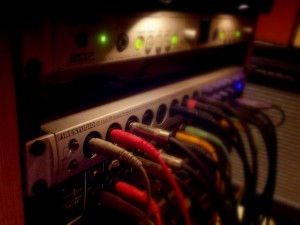
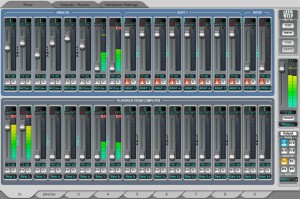
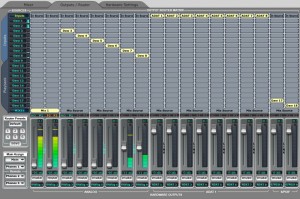
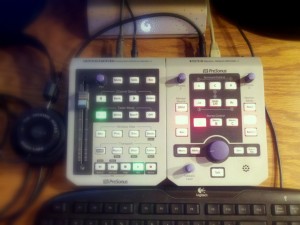
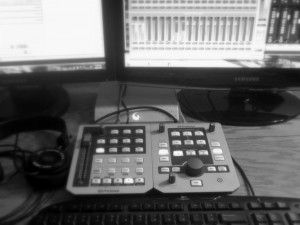


Leave a Reply